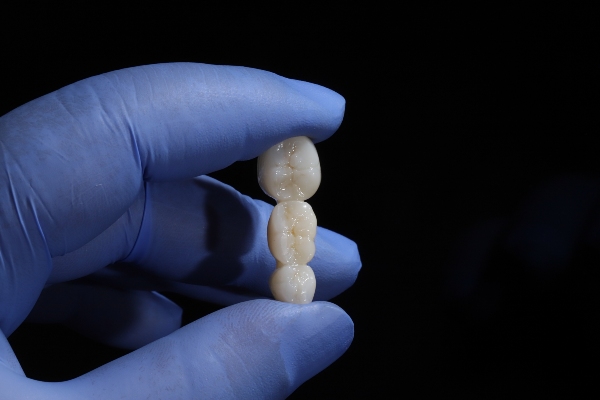 A dental bridge is a tooth replacement option that does not require incisions to be made into the gums. However, there are many different types of dental bridges, and finding the perfect one can feel overwhelming. While your dentist will usually recommend what they think is best, it can be helpful to know the available types ahead of time. This way, you can make an informed decision about your oral healthcare or prepare questions to ask your dentist.
A dental bridge is a tooth replacement option that does not require incisions to be made into the gums. However, there are many different types of dental bridges, and finding the perfect one can feel overwhelming. While your dentist will usually recommend what they think is best, it can be helpful to know the available types ahead of time. This way, you can make an informed decision about your oral healthcare or prepare questions to ask your dentist.
The many types of dental bridges
Dental bridges come in many forms, but what unites them is that they leverage the teeth around the gap made by a missing tooth in order to suspend a replacement in that space. The main types of dental bridges that patients can choose from are as follows.
Traditional bridges
The most common type of bridge, a traditional bridge, uses one tooth on each side of a gap to support a prosthetic tooth in between. The two natural teeth are shaped to the extent that they can each be covered by a crown, onto which the prosthetic is attached. Due to the need for two crowns supporting the false tooth between them, a traditional bridge only works when the person is missing one tooth between two healthy teeth.
Cantilever bridges
Unlike traditional bridges, which affix crowns to teeth on either side of a gap, cantilever bridges only require one supporting tooth. This makes them more common for treating missing teeth at the end of a dental arch, where only one tooth remains to support the bridge. The rest of the process is the same, with an abutment being placed as a crown on one tooth to support the prosthetic.
Maryland bridges
One of the challenges that dentists face is the front teeth not being as conducive to crowning as the back teeth. So, if a person needs a bridge on the front teeth, a Maryland bridge could be an alternative. This type of bridge uses “wings” bonded to the backs of two nearby teeth to hold a prosthetic in place.
The supports attached to the backs of the teeth are not visible when a person smiles. Maryland bridges cannot withstand strong bite forces (such as those experienced by the molars), so they are typically only used for front teeth.
Removable bridges
Some patients may be good candidates for removable bridges, also called partial dentures. These installations are created using a mold of the patient’s mouth and can be snapped in or out like a retainer whenever the patient wishes. However, their removable nature makes them less sturdy than other types of bridges.
Explore your options for dental bridges
A dental bridge is an accessible way to replace a missing tooth, and with so many options available, patients of all types can find a solution that suits their needs. Contact our dentist to discuss which kind of bridge might be a good fit for your oral situation and to ask any questions about the process.
Request an appointment or call Tuskawilla Family Dentistry at 407-603-0135 for an appointment in our Winter Springs office.
Related Posts
Getting a dental bridge is easy and economical. But there are factors to consider before you have these dental restorations. A full oral exam will determine if you can get a bridge. Here are the details to consider if you are a good dental bridge candidate.This is a vital consideration in one’s candidacy for a…
Are you considering a dental bridge to replace a missing tooth? Read on to learn more. The space left by a missing tooth may make eating and talking difficult. If you have lost your teeth, your goal might be to find a good-looking and functional tooth replacement solution. In that case, a dental bridge is…
A dental bridge is a proven missing tooth solution for individuals with gaps in their smile. A dental bridge can restore oral health, enhance appearance, and improve quality of life. If you are exploring your tooth replacement options, dental bridges offer both functional, oral health and aesthetic benefits.Dental bridges are one of the most well-known…
